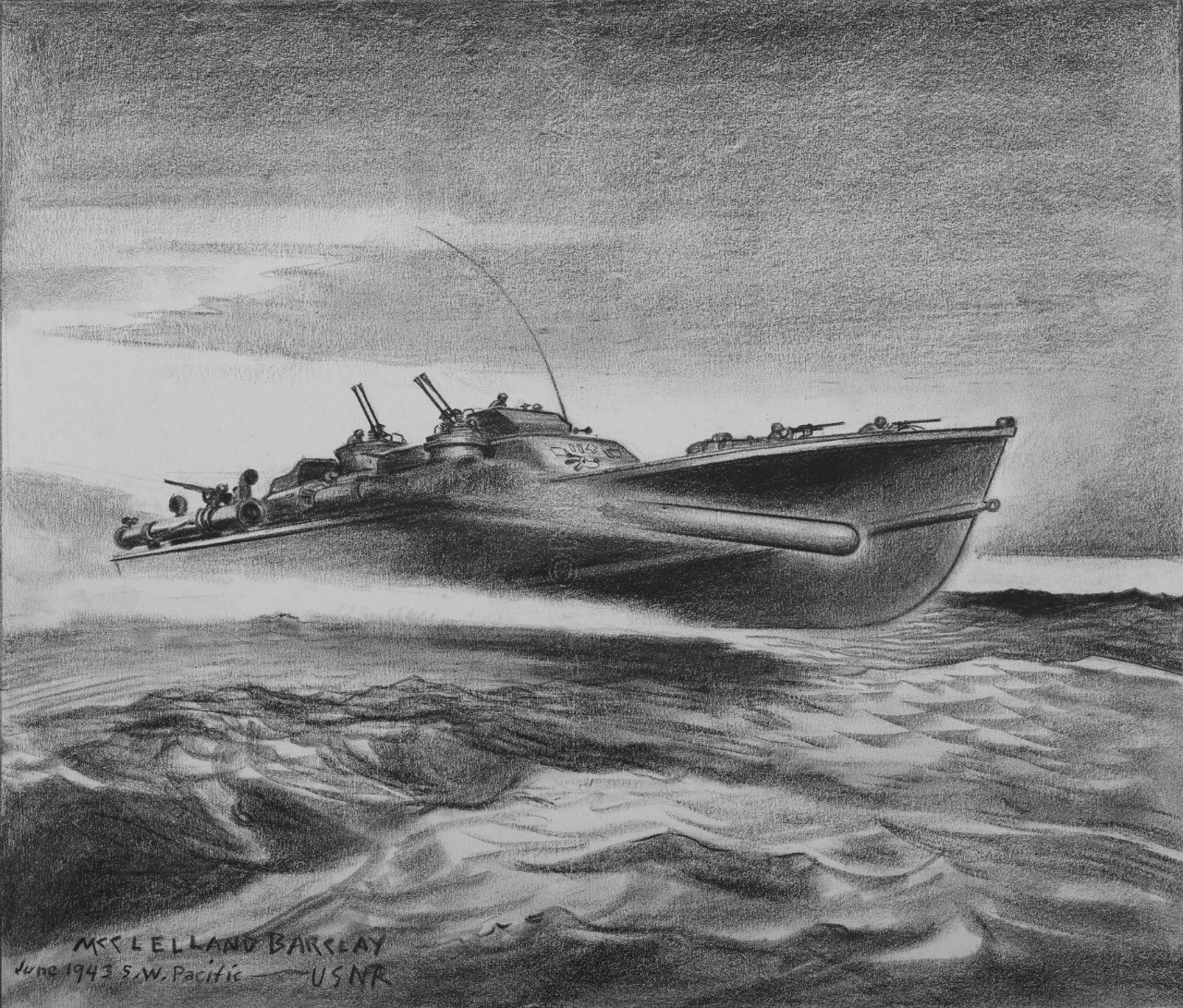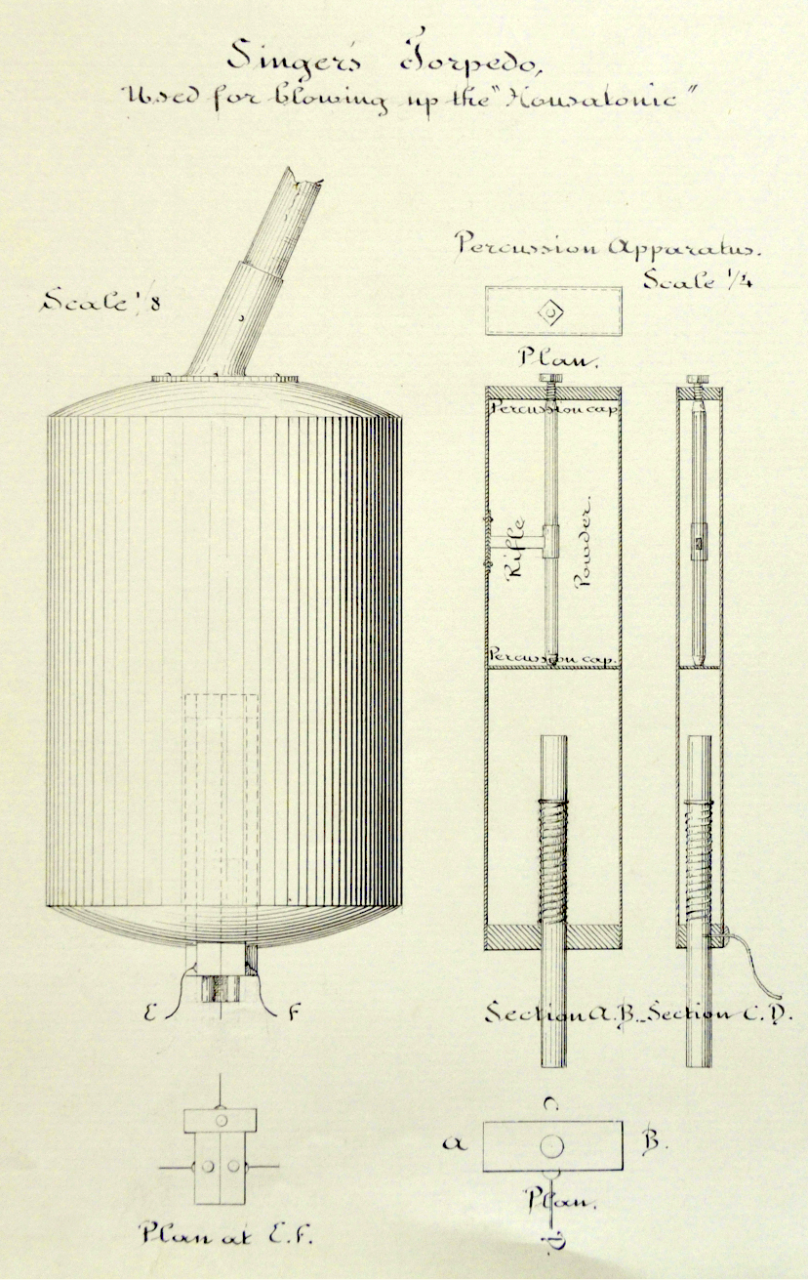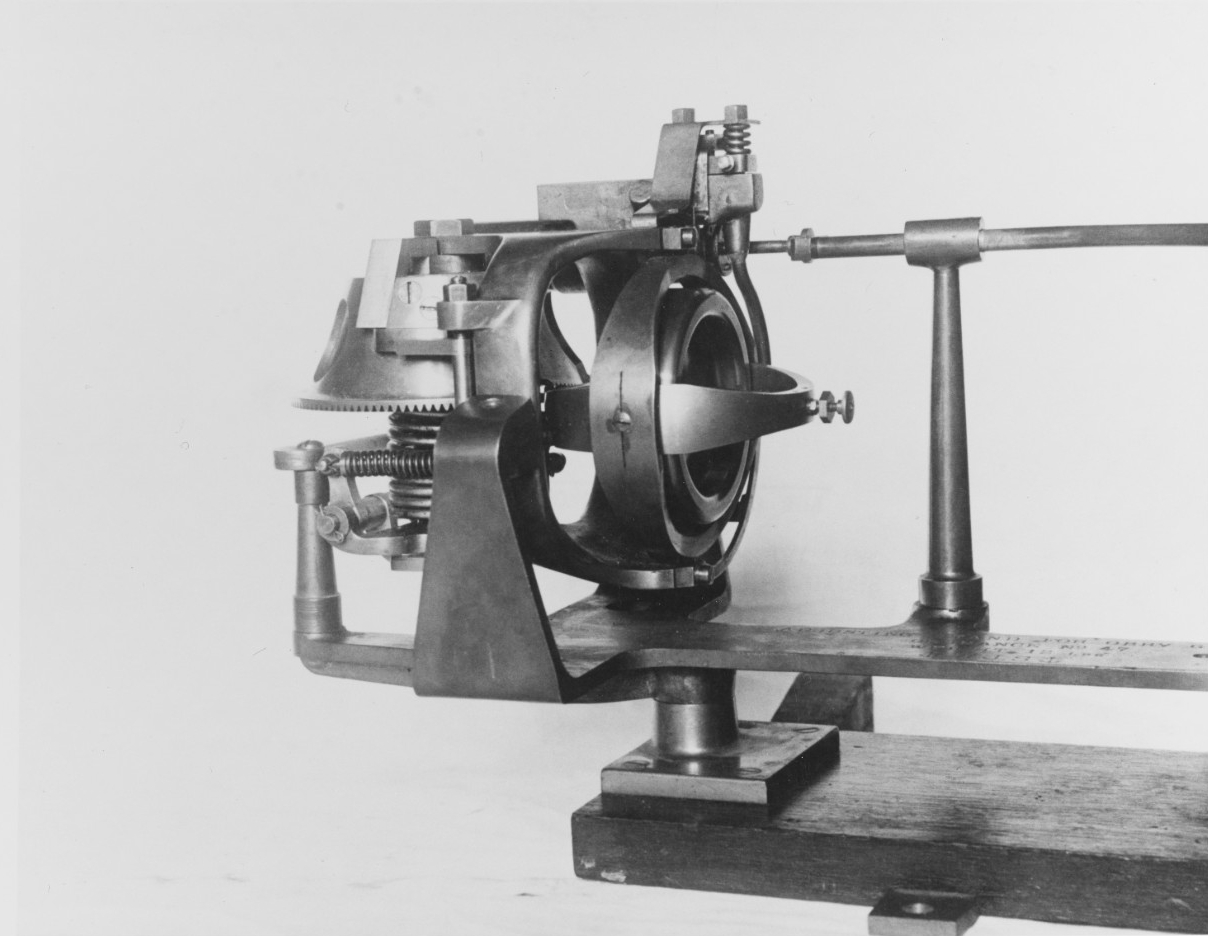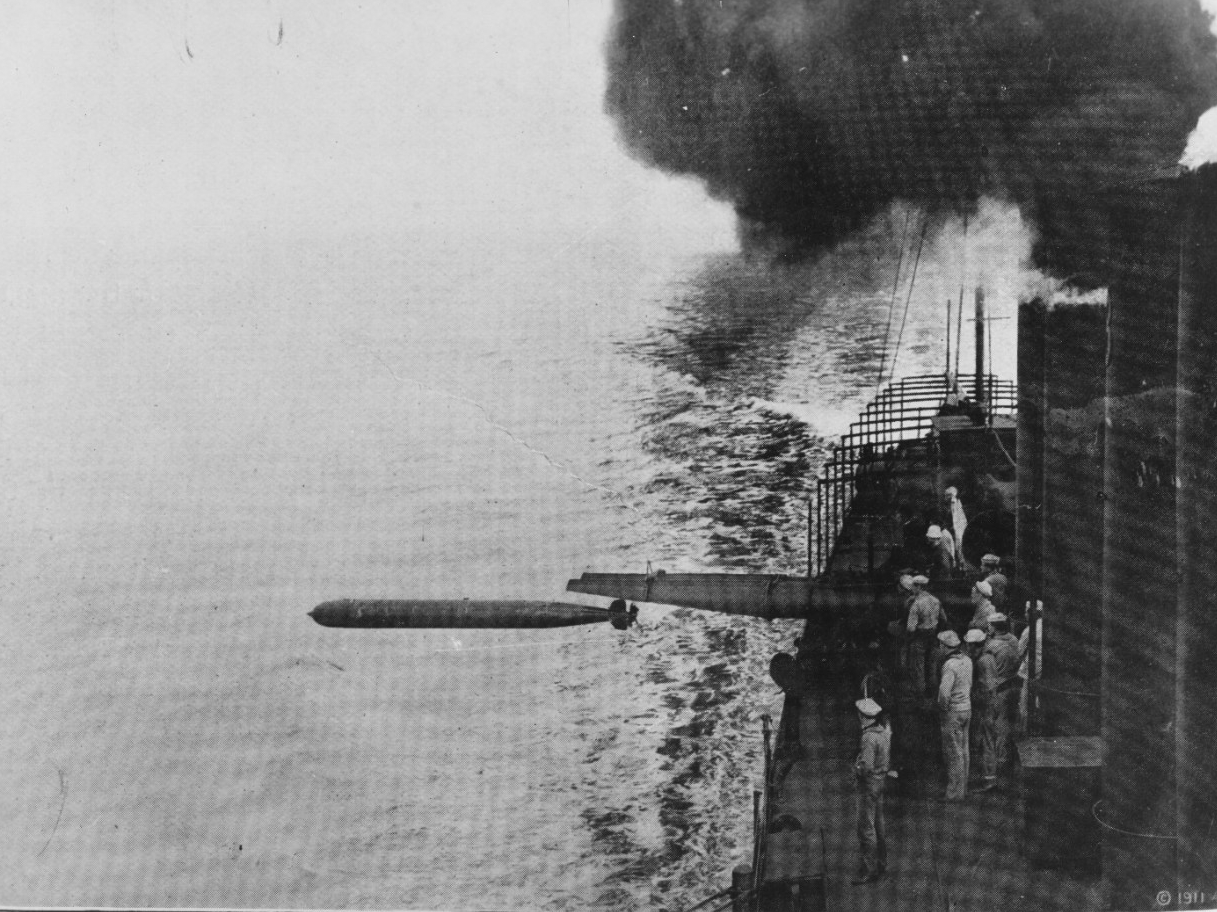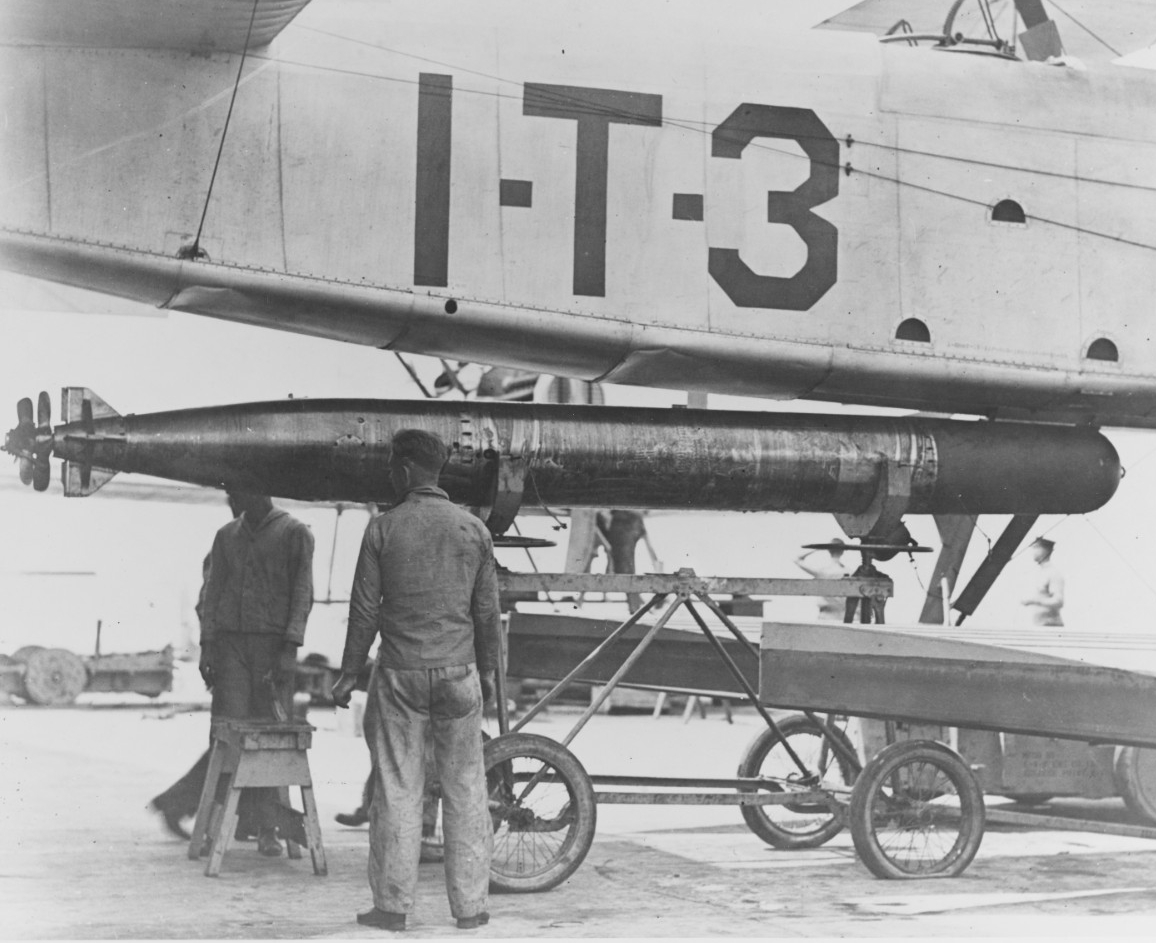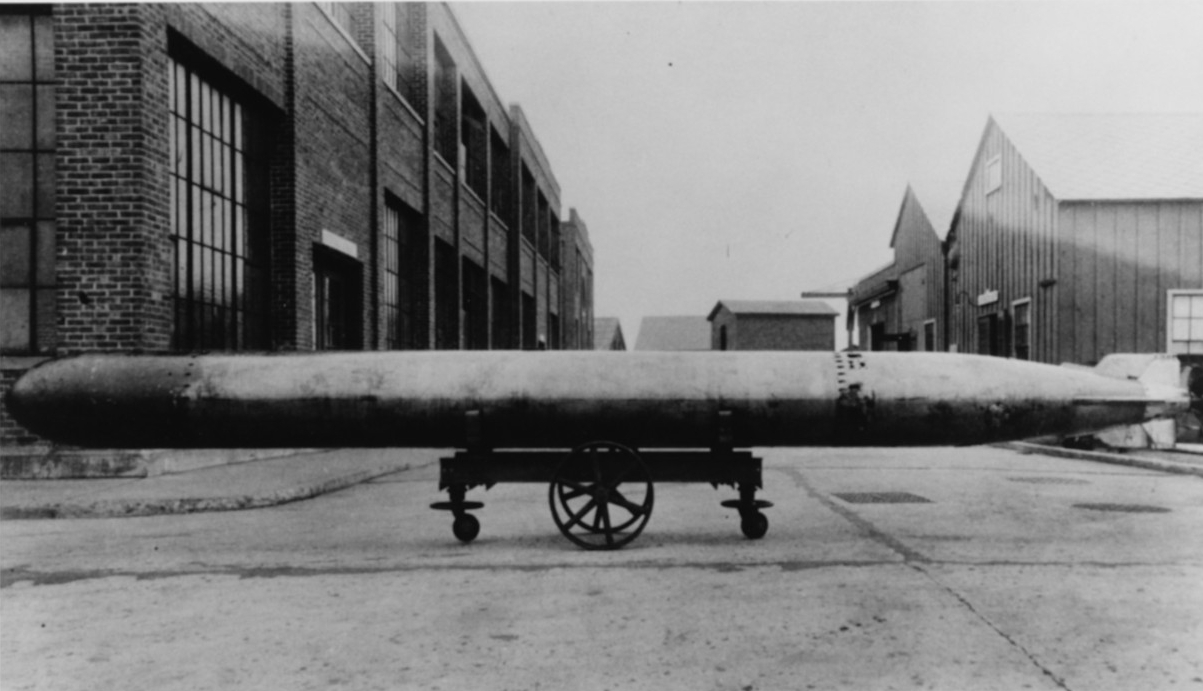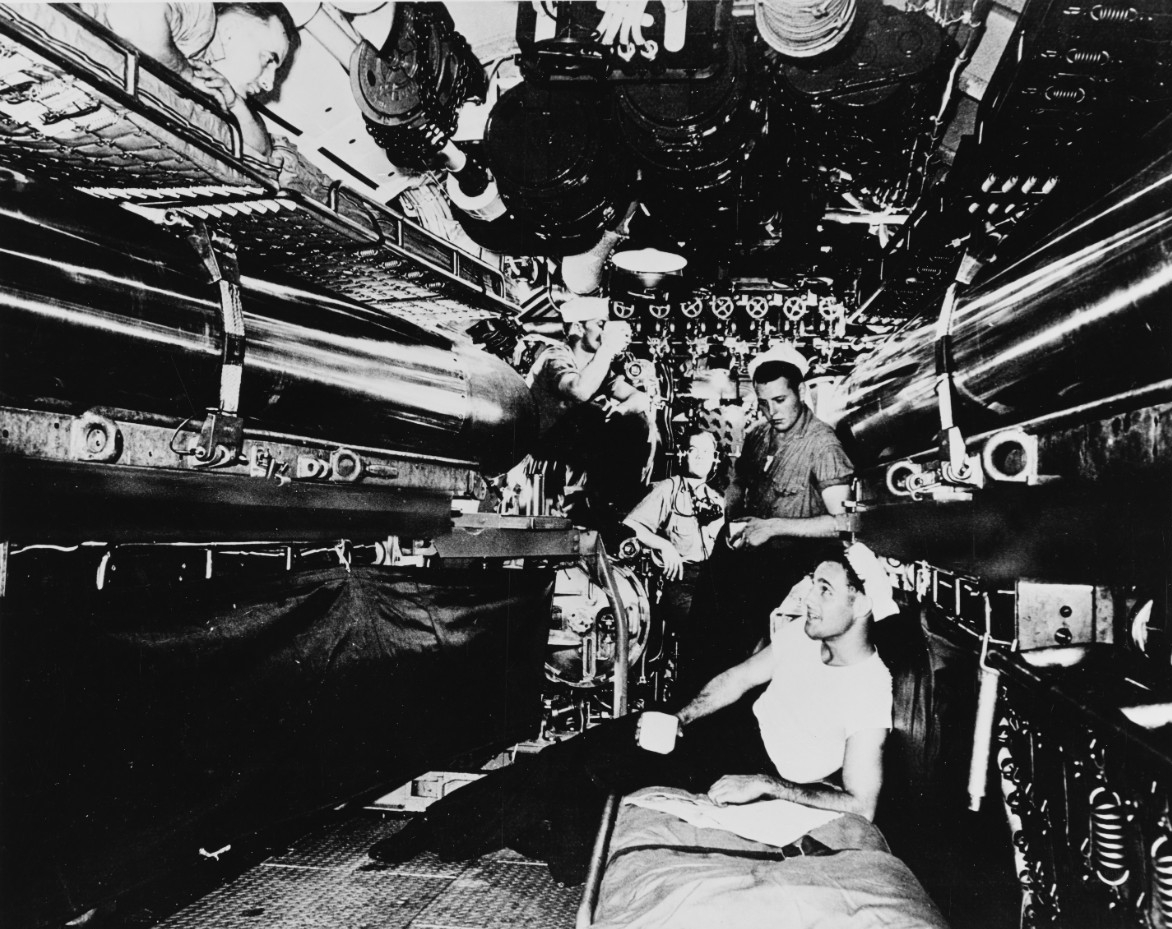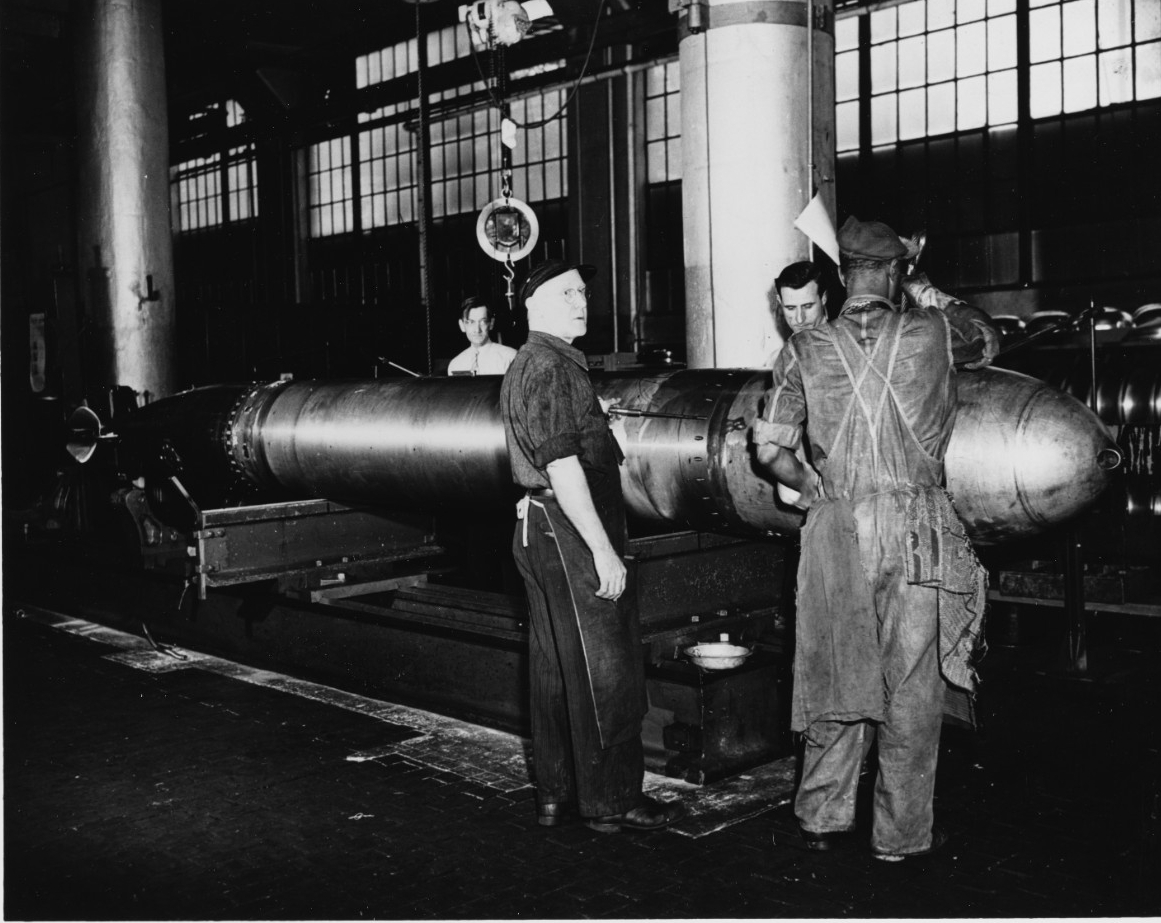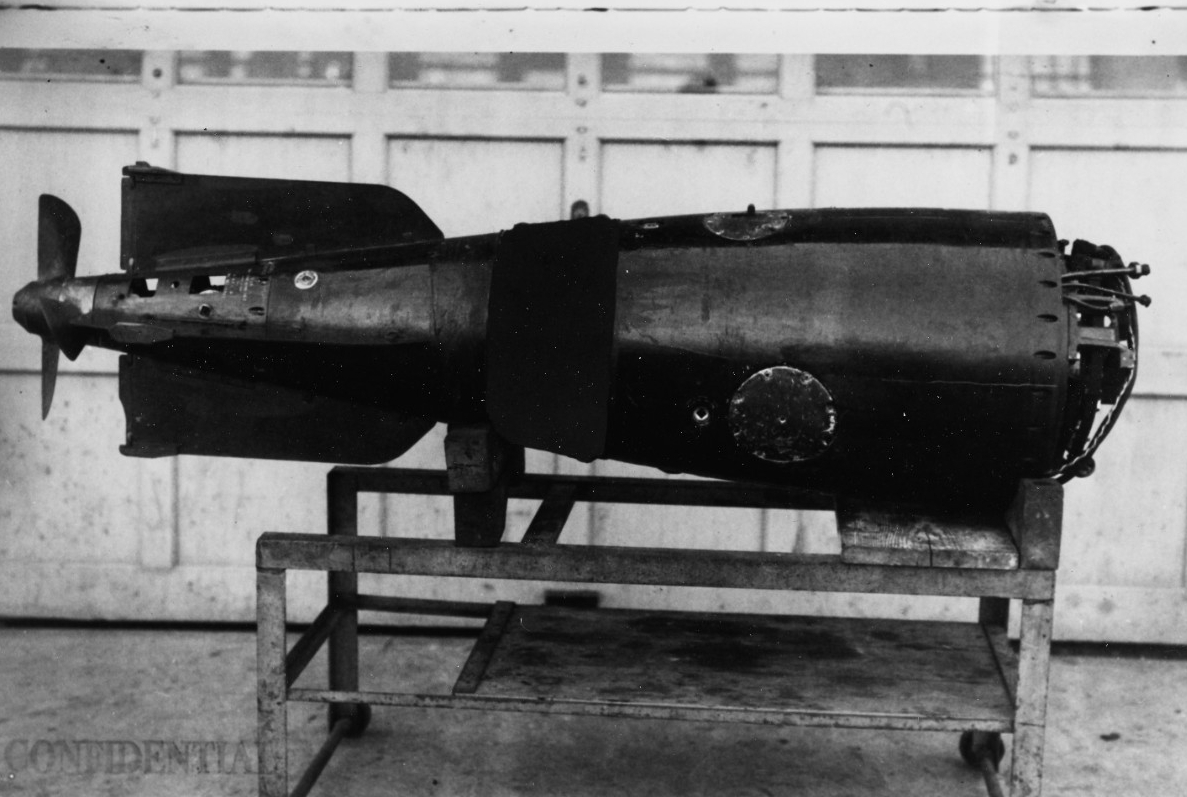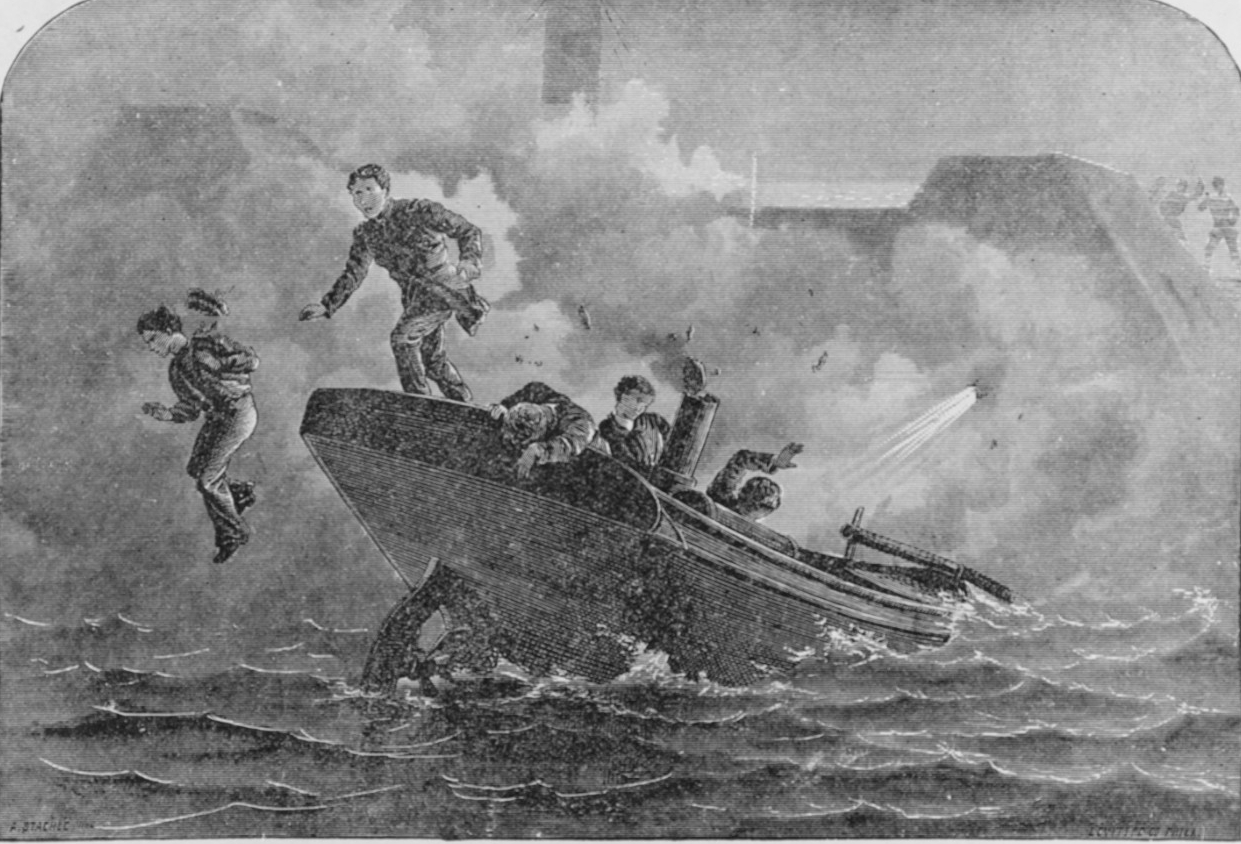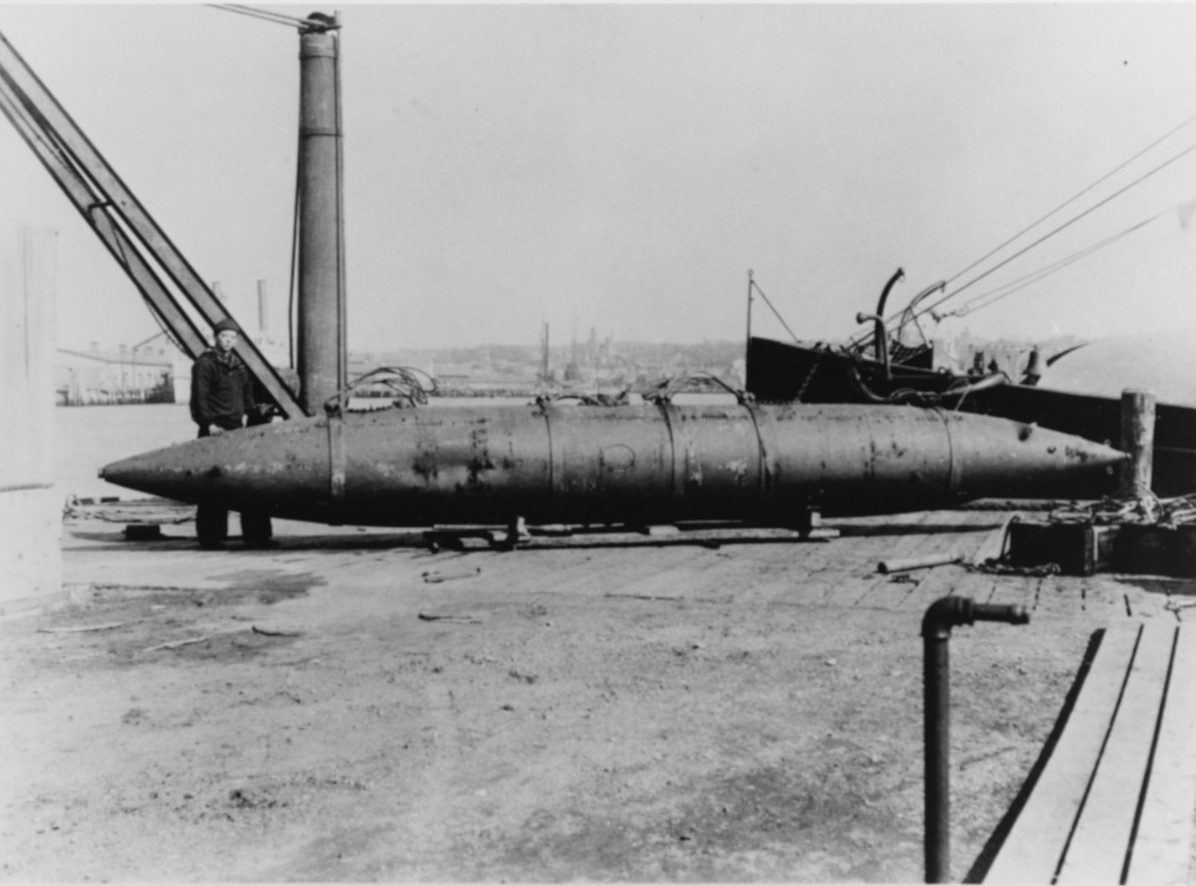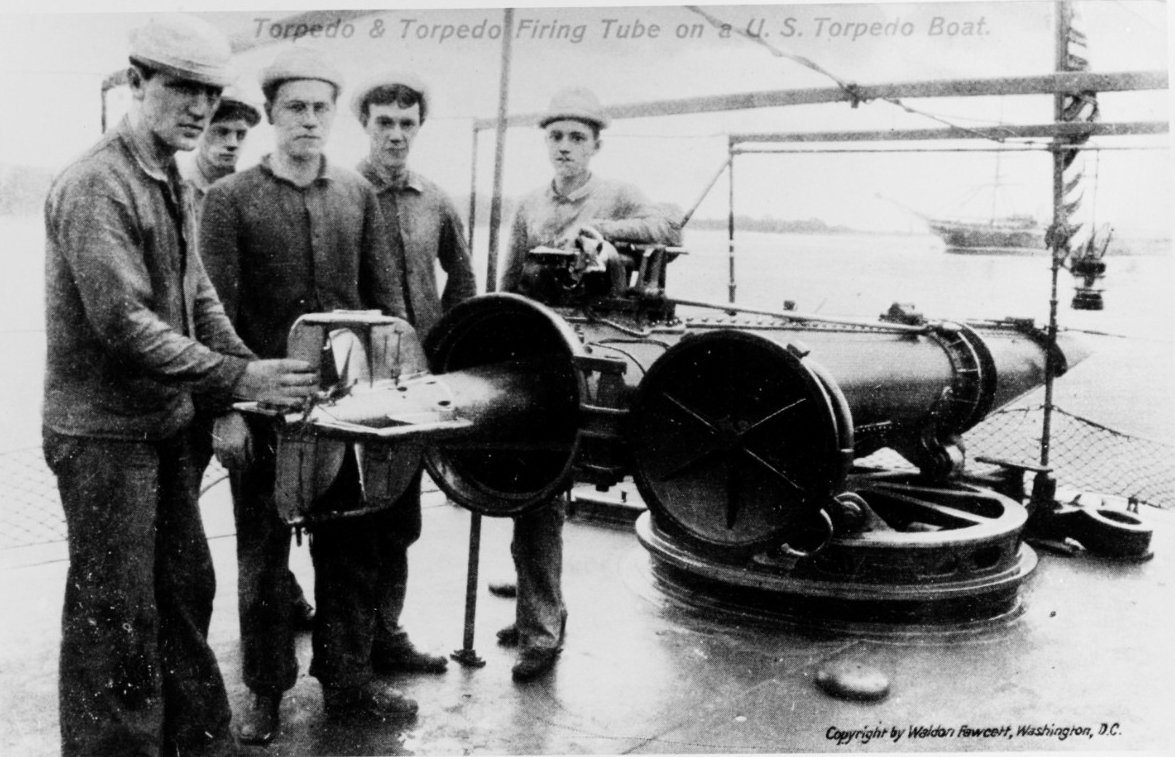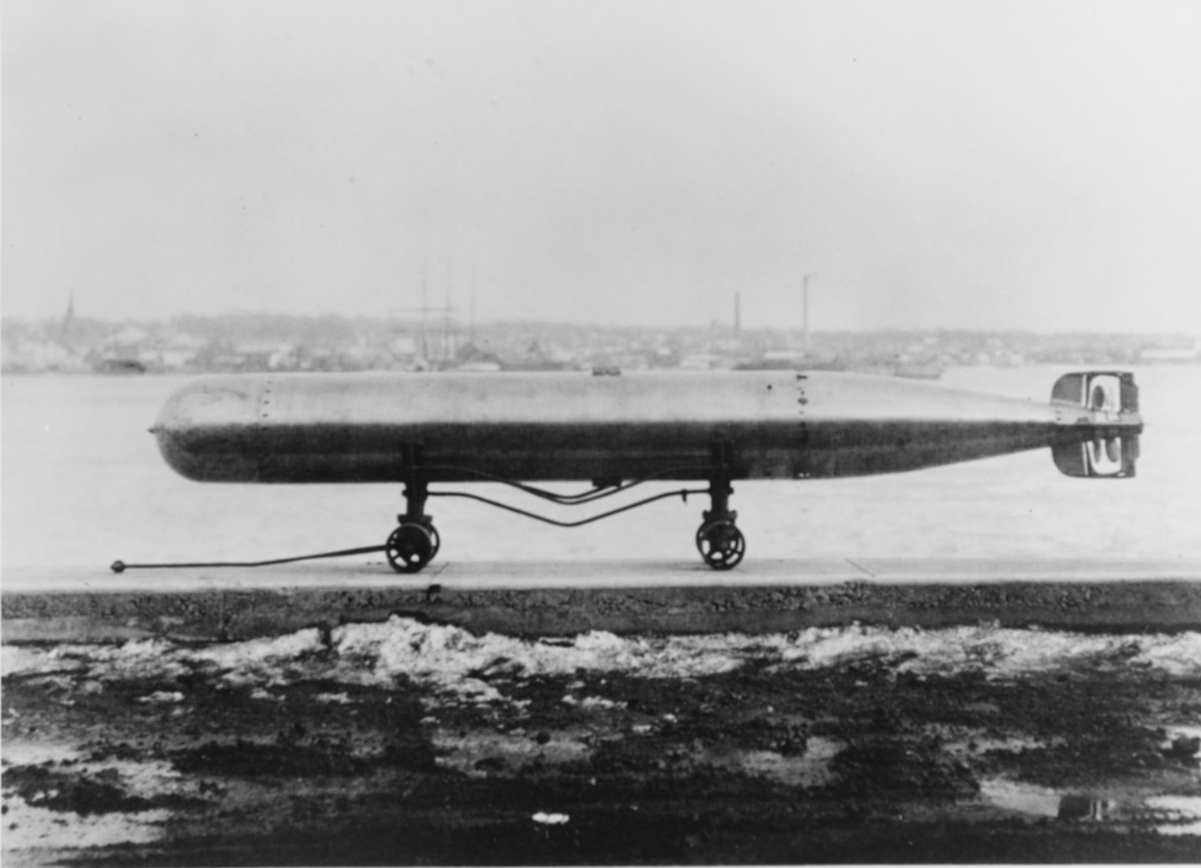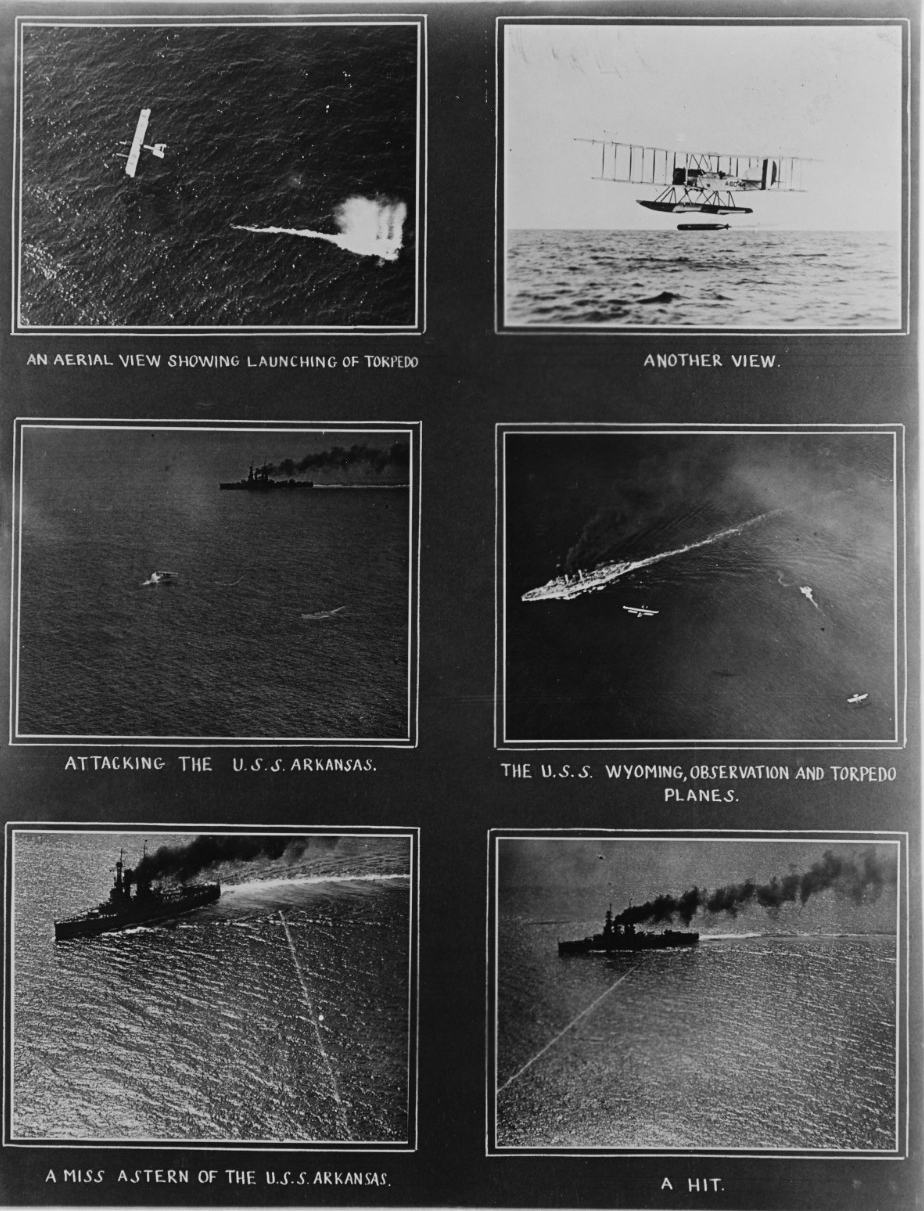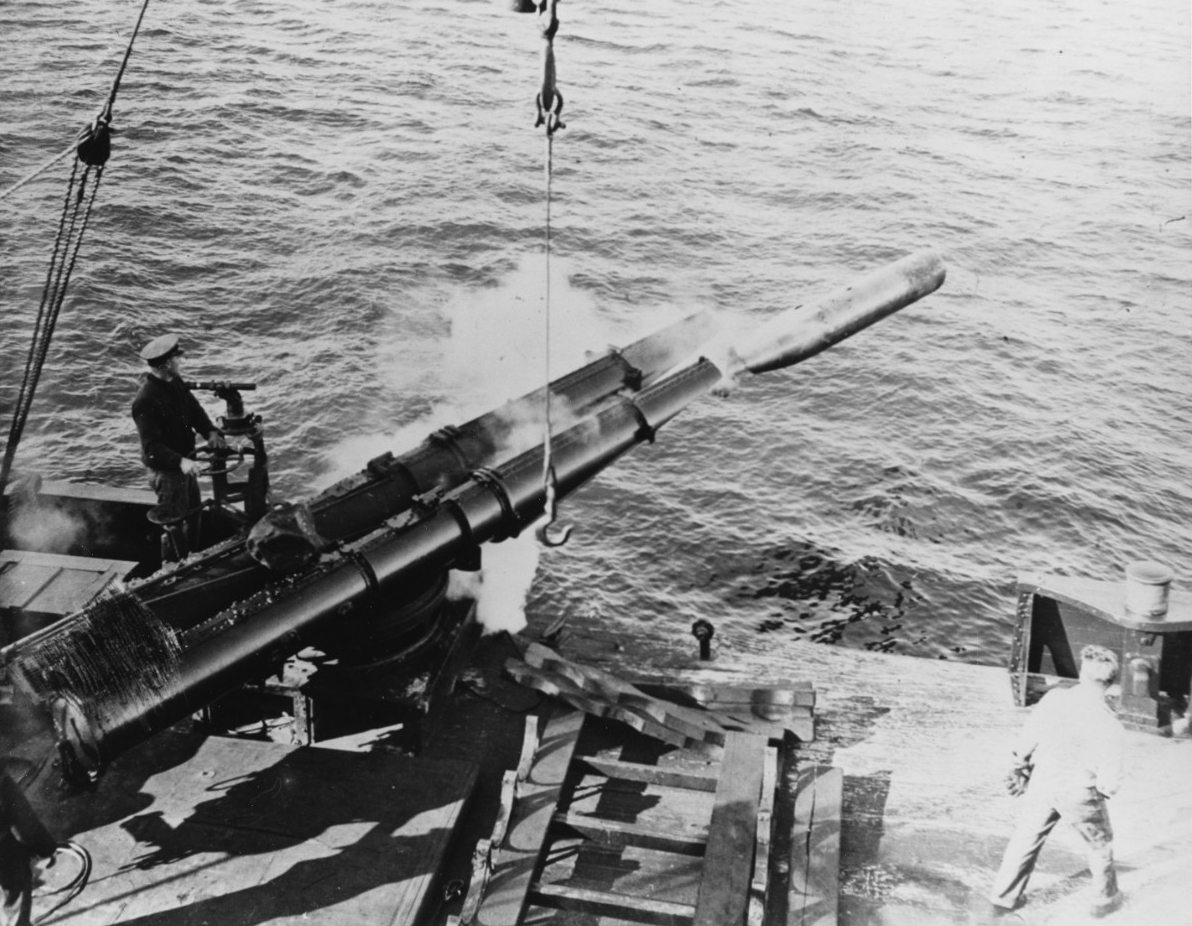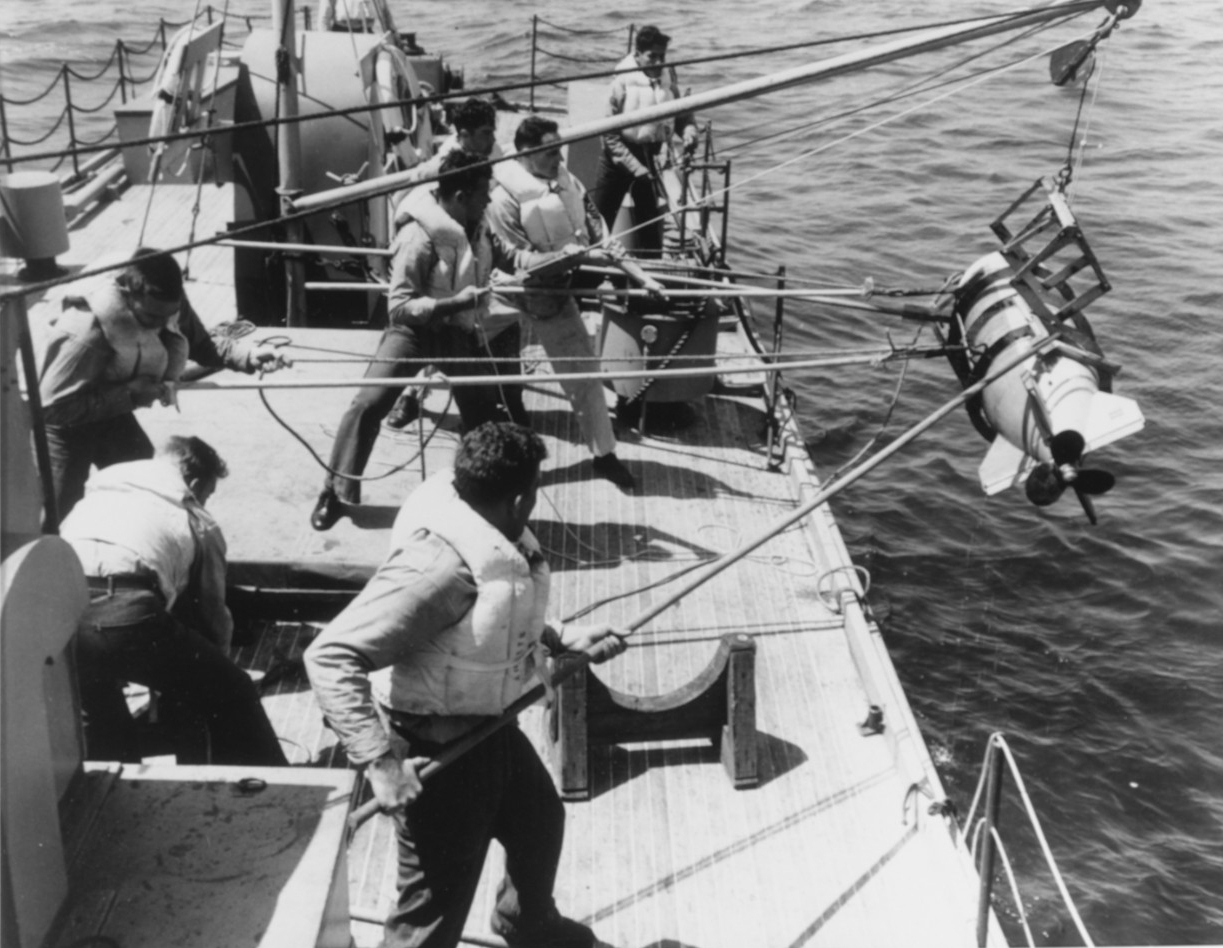Navy’s Use of Torpedoes
The earliest known use of the torpedo dates back to 1585 by the Dutch, which was actually a ship packed with explosives. The torpedo is a direct descendant of the mine. During the American Revolution, kegs of gunpowder took the place of ships in the 1778 Battle of the Kegs. The first American use of the torpedo dates back to 1775 when David Bushnell discovered gunpowder could explode underwater. His submarine the Turtle fastened a 150-pound mine to Lord Howe’s flagship but the attack was unsuccessful.
Robert Fulton continued Bushnell’s work when he developed floating mines that were anchored to the ocean’s floor. The mines, which he sold to the American Navy, could stay in place indefinitely unlike other versions, which were uncontrollable and would move with the tide. Throughout the Civil War, mine warfare continued. The Confederates used mines extensively to counter the Union’s much larger Navy.
In 1866, Robert Whitehead designed the first “automobile” torpedo that was self-propelled. It was designed to attack the enemy rather than wait for the enemy. His torpedo design was the point where all other concept designs would begin. The first Whitehead torpedo used a two-cylinder, compressed air engine capable of traveling up to 6.5 knots for a distance of 200 yards.
In 1869, the Navy established a torpedo station at Newport, Rhode Island, where they built and designed torpedoes based on Whitehead’s ideas, although the first torpedo never left the testing phase because the air flask and hull did not maintain watertight integrity. The engine was also flawed. Only two torpedoes were ever developed at the torpedo station before the program was terminated in 1874.
The first successful torpedo program by the U.S. Navy began in 1870. Lieutenant Commander John A. Howell created a torpedo that was driven by a 132-pound flywheel that spun to 10,000 revolutions per minute. A steam turbine housed on the torpedo tube spun the flywheel before it launched. The Navy produced about 50 of the Howell torpedoes for tactical use. Eventually, the U.S. would go to the Whitehead and Bliss-Leavitt torpedoes that would make up the U.S. arsenal until 1910. The Whitehead Mk 5 could go about 4,000 yards at speeds up to 27 knots.
From 1910 to 1915, the torpedo detonator saw many modifications. Before the modifications, torpedoes would have to strike a direct hit to explode, but the improved detonators could explode from any direction or even a glancing blow to a hull. Torpedo development was minimal during World War I. The Mk 7 was the first steam-driven torpedo that could be fired from both destroyers and submarines.
The post-World War I/pre-World War II era defined the modern torpedo. The first American airdrop torpedo test occurred in 1920. The Mk 13, the aircraft launched torpedo, was 13-½ feet long, had a range of 7,000 yards, and could get up to a speed of about 30 knots. The Mk 14 torpedo was deployed from submarines. That type of torpedo was responsible for sinking more than four million tons of Japanese shipping during World War II. The Mk 15 torpedo that was on destroyers had an 825-pound warhead and remained in service until the 1950s.
Around 1941, German submarine U-570 was captured and with it came the design of the electric torpedo. Within a year of the U-boats capture, the Mk 18 was available to the fleet. The electric torpedo had two advantages: it was wakeless and required less manufacturing effort. Another torpedo developed during the war was the homing torpedo. The idea was the torpedo attacked what it heard. The Mk 24, nicknamed “Fido,” was responsible for sinking approximately 15 percent of enemy submarines from 1943 to war’s end.
In the early 1950s, the thrown torpedo was developed. They were built to detect enemy submarines coming too close to ship convoys or U.S. ports. The torpedo was the initial format for the Mk 44 and Mk 46 torpedoes, which were rocket propelled. Also in the 1950s, submarines acquired nuclear propulsion, which made them faster. A faster torpedo also had to be developed. The Mk 45 provided speeds up to 40 knots and a range of 11,000 to 15,000 yards. It was eventually replaced with the Mk 48, which still today is the primary active service torpedo in the United States submarine arsenal. It is 19-feet long, weighs approximately 3,500-pounds, and carries 650-pounds of high explosive. The Mk 48 torpedo also has the capability of “re-attacking” if it misses its target.
In 1972, the Navy began developing the Mk 50 torpedo—nicknamed “Barracuda”—when the Soviets introduced the Alpha submarine, which was a high-speed, deep-diving threat. The Mk 50 could be dropped from a plane, helicopter, or launched from a surface combatant. It is only 9-feet long, but can travel faster than 40 knots and has a range of 20,000 yards.
*****
Suggested reading
- H-Gram 008-3: Torpedo versus Torpedo
- H-Gram 010-3: Torpedo Junction
- Organization of Torpedo Corps
- The Sinking of the USS Housatonic by the Submarine CSS H.L. Hunley, off Charleston, South Carolina, 17 February 1864
- The Submarine Turtle: Naval Documents of the Revolutionary War
- Torpedo War
- Submarine Force
Artifacts
Selected Imagery
Singer Torpedo Designed for H.L. Hunley. Drawing of a spar-mounted torpedo designed by Singer for use on the submarine H.L. Hunley taken from the papers of Quincy Adams Gallimore, a Union general and engineer who had access to Confederate military papers in Charleston after the city's surrender. The heading claims it is the one used to sink USS Housatonic. From the National Archives and Records Administration.
Engraving by A. Stachic, published in "Naval Battles of America", by E. Shippen. It depicts the successful spar torpedo attack by Lieutenant William B. Cushing and his crew on the Confederate ironclad Albemarle, at Plymouth, North Carolina, 27 October 1864. U.S. Naval History and Heritage Command Photograph, NH 42220.
Bliss-Leavitt Torpedo Mark 3, 1911. A turbine driven torpedo, designed by M.F.M. Leavitt, an engineer at E.W. Bliss Co. Alcohol was mixed with super-heated compressed air to provide motive power for turbine. Navy adopted this torpedo circa 1904 and used various models of it for the next 22 years. Naval History and Heritage Command photograph, NH 82836.
Aerial Torpedo Exercise, circa early 1920s. Six views of Attack Exercise by Naval Air Force PT-I Torpedo Planes on a Battleship underway. Target in most photos is USS Arkansas. Note Torpedo tracks. "An aerial view showing launching of Torpedo," "Another view," "Attacking the USS Arkansas," "The USS Wyoming, Observation and Torpedo Planes," "A Miss Astern of the USS Arkansas," "A Hit." Naval History and Heritage Command photograph, NH 43416.
Dock-mounted twin torpedo tube test fires a torpedo (possibly fitment shape shot using an Mk 15 Shape) during World War II at the Naval Torpedo Station, Alexandria, Virginia, or at the Naval Torpedo Test Range, Piney Point, Maryland. Note that one tube is longer than the other. Also, note sight at left. Naval History and Heritage Command photograph, NH 94119.

